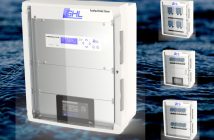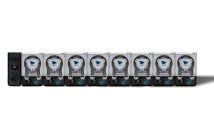Last December, I decided to partake in the very trendy aquarium filtration media that is biopellets. The solid carbon pellets, according to all of the bullet points, seemed to be the best way of feeding bacteria populations in the aquarium, which in turn would consume nitrate and phosphate in the long term. Since I was in the middle of a bad dinoflagellate outbreak that water changes, carbon, GFO, bacteria dosing, and long periods of no light couldn’t knock back, I was a bit desperate to try something outside of my comfort zone. Soon after, I found myself in possession of a container of Dr. Tim’s NP-Active Pearls that I eventually seeded with bacteria from Prodibio’s BioDigest and put into use on the dinoflagellate ridden aquarium. Within a few short weeks of biopellet use, we saw some spectacular results, but would that success carry on for the foreseeable future?
About a month after starting the biopellets, I noticed pretty much all of the positive things that aquarium hobbyists have been saying. The tank looked cleaner, the dinoflagellates were gone, the protein skimmer was really making some sludge, and nitrate and phosphate numbers were down. Needless to say, things were going great and I was officially a fan of the media.
Fast forward to the four month mark and things started turning sour. Around that time, I topped up the media, but nothing really changed other than that. Unfortunately, that’s also the same time that cyanobacteria started to rear its ugly head. Fully aware that the purple slime is a known byproduct of biopellet use, I just upped the frequency of my water changes and hoped that the cyano problem would work itself out. It persisted, however, and grew to be an ever larger problem, prompting me to increase the water flow in the tank significantly. None of these fixes seemed to work, and the cyanobacteria stuck around despite my efforts. Regardless, I proceeded with the biopellet use hoping that things would straighten out.
After roughly eight months of biopellet use, I did some some preliminary water testing and found the phosphate number actually shot up during the experiment. Despite all of the RO/DI filters being replaced and adding carbon to the mix, the pellets just didn’t seem to work. At that point, tired of tinkering around with them, I officially took the biopellets offline and decided to crank up the GFO once again. It’s only been a couple of days since quitting the pellets cold turkey, and to be honest, the tank is looking a bit cleaner already. The cyano is still there, but it completely disappears over night and comes back slower and slower each day.
All of that experimenting aside, I haven’t completely written off the biopellets. Aquarium keepers are still attributing tons of benefits to their use, and perhaps the next system I try them on will be better. After all, the worst that could happen is another outbreak of cyano, which will be fine because the tank will likely not be housing corals and fish for a while.







Pingback: The AquaNerd Weekly Recap | AquaNerd()
Pingback: Filter Socks, a Useful Form of Physical Filtration | AquaNerd()
Pingback: Pure Marine from Evolution Aqua is New Way to Dose Bacteria | AquaNerd()